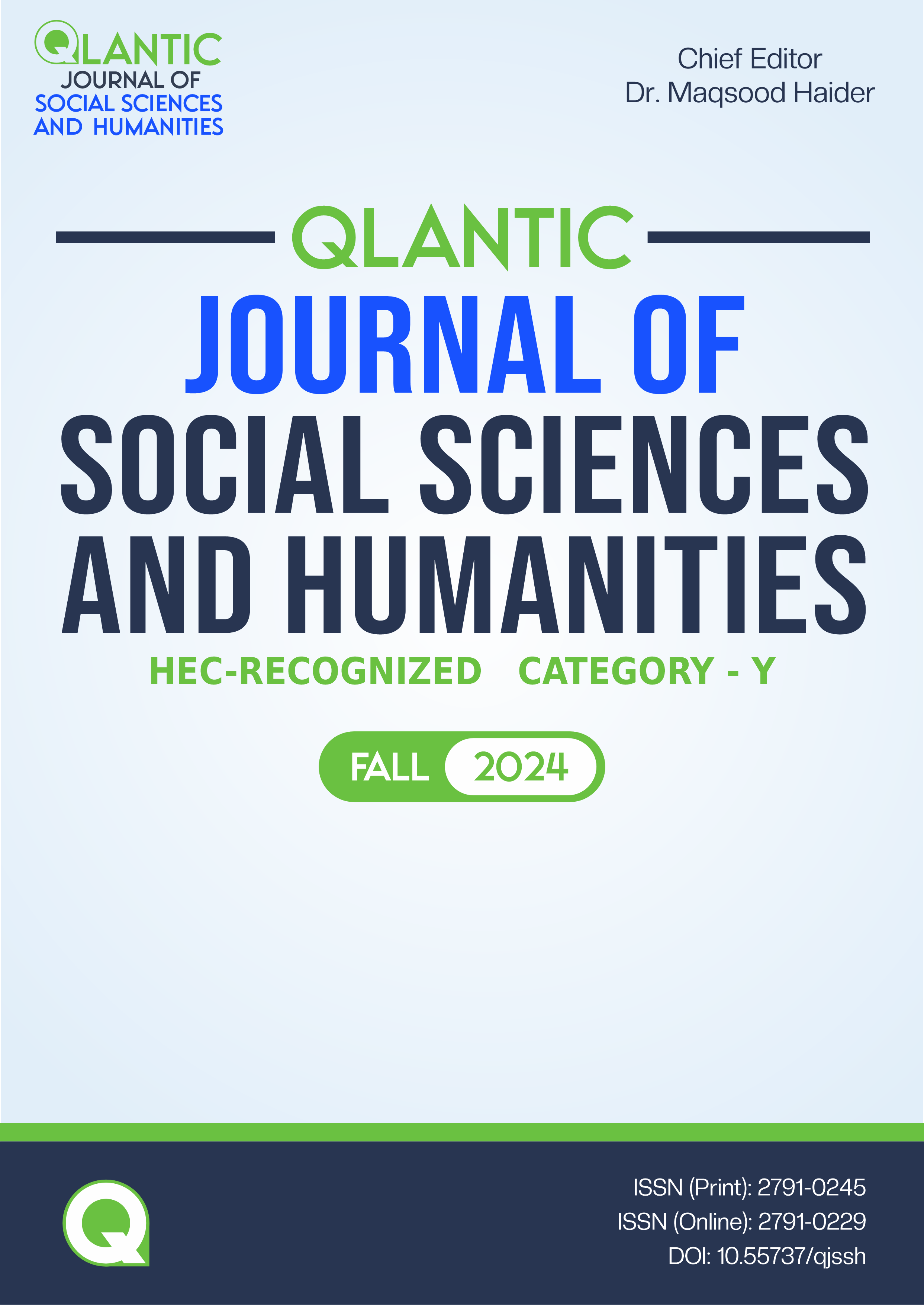Examining Relationship between Indoor Thermals and Visual Environment of Educational Institute: A Case Study of Engineering University, Main Campus Lahore
DOI:
https://doi.org/10.55737/qjssh.691003576Keywords:
Indoor Thermal Comfort, Visual Environment, Educational Institute, ASHRAE-55Abstract
In today's world, people tend to spend a substantial amount of their time in an indoor environment. The productivity and well-being of building inhabitants are greatly impacted by the quality of the indoor environment. Indoor quality and comfort depend upon various aspects like thermal comfort, visual environment, and acoustic and air quality. The main campus of Engineering University was selected for this study, and data was obtained from the campus to analyze the indoor thermal and visual environment for the winter. The physical, environmental, and personal factors for indoor thermal and lighting parameters of visual assessment were monitored. A sample size of nighty eight students was selected for the study by applying probability and snowball sampling techniques. The study was conducted by utilizing the occupant's survey and asses the findings on the standards established by the international organization, i.e., ASHRAE-55. Results indicate that occupant's response towards visual comfort is positive, while indoor thermal quality deviates from a set of standards established by the organization. Major sources of discomfort in the indoor environment, specifically in winter, are moving air and poor working of the heating mechanism. Thus, smart control sensors should be integrated to regulate the quality standards, occupancy sensors, BAC (Building et al.) systems, and lighting control systems that allow individuals to adjust according to their comfort range. Regulates the follow-up feedback from occupants yearly to maintain and improve the indoor thermal and visual comfort of the campus. The study examined the interventions and underlined the influence of indoor thermal and visual comfort on students learning outcomes in higher education contexts. A comprehensive study of each department should also be conducted to highlight problematic areas based on the study's parameters.
References
Alghamdi, S., Tang, W., Kanjanabootra, S., & Alterman, D. (2023). Field investigations on thermal comfort in university classrooms in New South Wales, Australia. Energy Reports, 9, 63–71. https://doi.org/10.1016/j.egyr.2022.11.156
Balbis-Morejón, M., Rey-Hernández, J. M., Amaris-Castilla, C., Velasco-Gómez, E., San José-Alonso, J. F., & Rey-Martínez, F. J. (2020). Experimental Study and Analysis of Thermal Comfort in a University Campus Building in Tropical Climate. Sustainability, 12(21), 8886. https://doi.org/10.3390/su12218886
Bin, W. H. (2021). Journal of Research in Architecture and Planning. Department of Architecture and Planning, NED University of Engineering and Technology, Karachi, 30(1), 12–28. https://doi.org/10.53700/jrap_neduet
Disci, Z., Sharples, S., & Lawrence, R. (2023). Occupant thermal comfort in educational buildings. Liverpool.ac.uk. https://livrepository.liverpool.ac.uk/3171109/1/HBE2023-Zehra_Nur_Disci%20accepted%20paper.pdf
Dolnikova, E., & Katunsky, D. (2019). Visual Comfort Assessment in an Industrial Environment: A Case Study. Environments, 6(5), 54. https://doi.org/10.3390/environments6050054
Ionta, S. (2021). Visual Neuropsychology in Development: Anatomo-Functional Brain Mechanisms of Action/Perception Binding in Health and Disease. Frontiers in Human Neuroscience, pp. 15, 1–17. https://doi.org/10.3389/fnhum.2021.689912
Kuhlenengel, M., Konstantzos, I., & Waters, C. E. (2012). Student Achievement. Higher Education Abstracts, 47(1), 51–56. https://doi.org/10.1111/j.2150-1092.2011.00033_38.x
Meng, X., Zhang, M., & Wang, M. (2023). Effects of school indoor visual environment on children’s health outcomes: A systematic review. Health & Place, 83, 103021. https://doi.org/10.1016/j.healthplace.2023.103021
Palella, B. I. (2021). Indoor Thermal Comfort. In Indoor Thermal Comfort. https://doi.org/10.3390/books978-3-03943-528-9
Riaz, H., Arif, S., Riaz, A., Khan, M. Arif., Amina, N., Iqbal, A., Sohail, R., & Ashraf, A. (2023). Assessment of Occupants Thermal Comfort in University Classrooms on the basis of gender preferences. Interciencia. https://doi.org/10.59671/p72vc
Downloads
Published
Issue
Section
License

This work is licensed under a Creative Commons Attribution-NonCommercial 4.0 International License.





